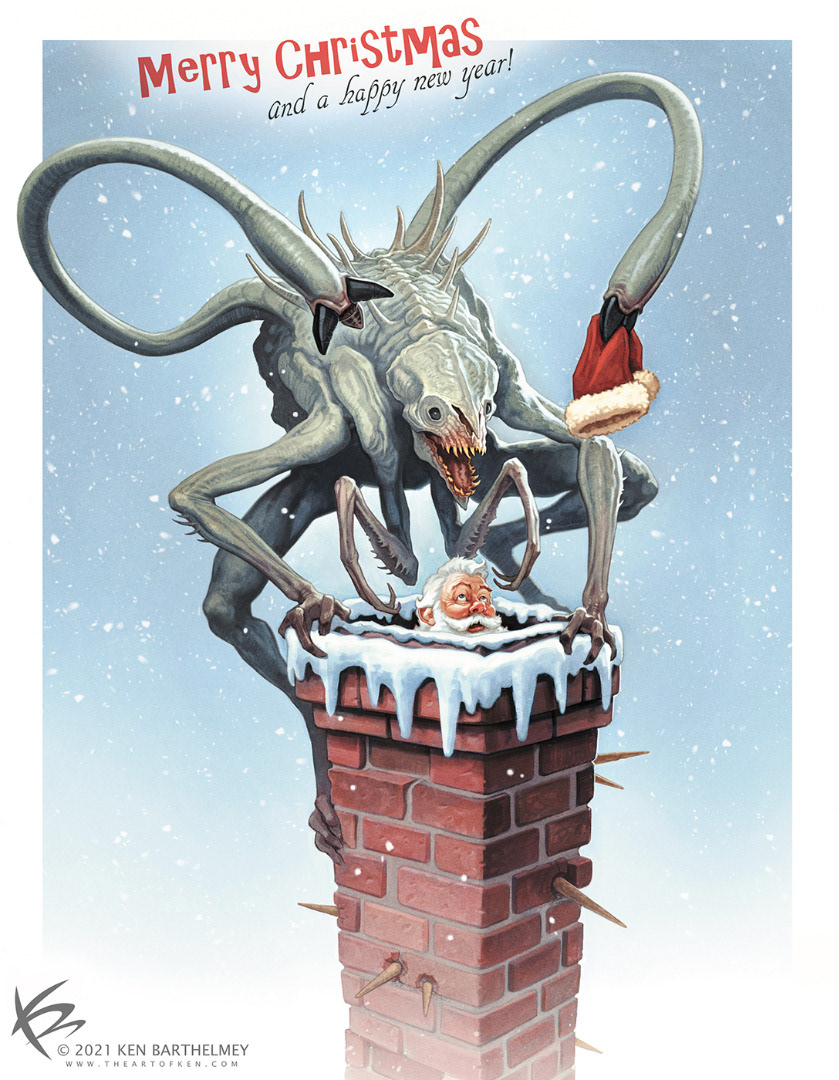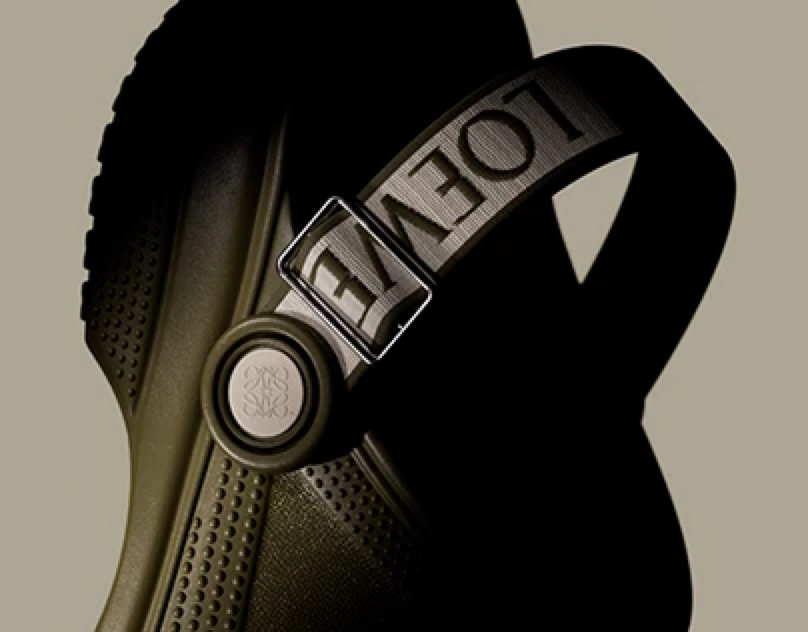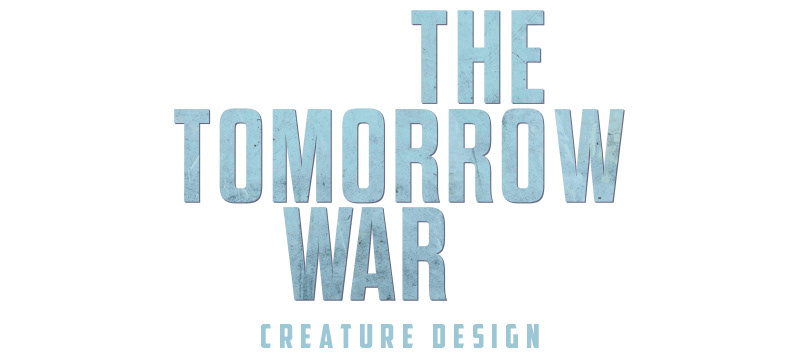
I was thrilled to have the opportunity to design the menacing White Spikes for the film "The Tomorrow War."
Back in early 2019, I worked a few weeks with director Chris McKay and production designer Peter Wenham on the film. To my surprise, I was told at the very end that other designers already had worked separately on different alien designs and that ultimately my design had been selected for the film. My concepts were then brought to life by the skilled teams at Weta Digital, Luma Pictures, Framestore, Method Studios and Spectral Motion.
I'm happy to share some of the concepts I created for the film, along with a description of how it all came together.
White Spike Brief
The White Spikes had to be a powerful enemy. Director Chris McKay described the White Spikes to me as vicious creatures that attack and eat everything in sight. He asked for a compelling design that conveyed the hunger and intelligence of these creatures.
Additionally, the White Spikes needed to have different abilities such as fast swimming and flying. It was important that they were agile and able to move extremely fast. It was my job to translate all this information into one cohesive design.
In our Skype meetings, Chris mentioned H.R. Giger’s Alien and Hellraiser as a reference point but he also encouraged me to show him additional ideas. He liked the work he had seen on my website and wanted to see what I’d come up with.

Early Ideas
Because there was no clear description of the White Spikes, I gave Chris a few different options to choose from in the beginning. In this early stage, it was all about brainstorming and coming up with interesting ideas.
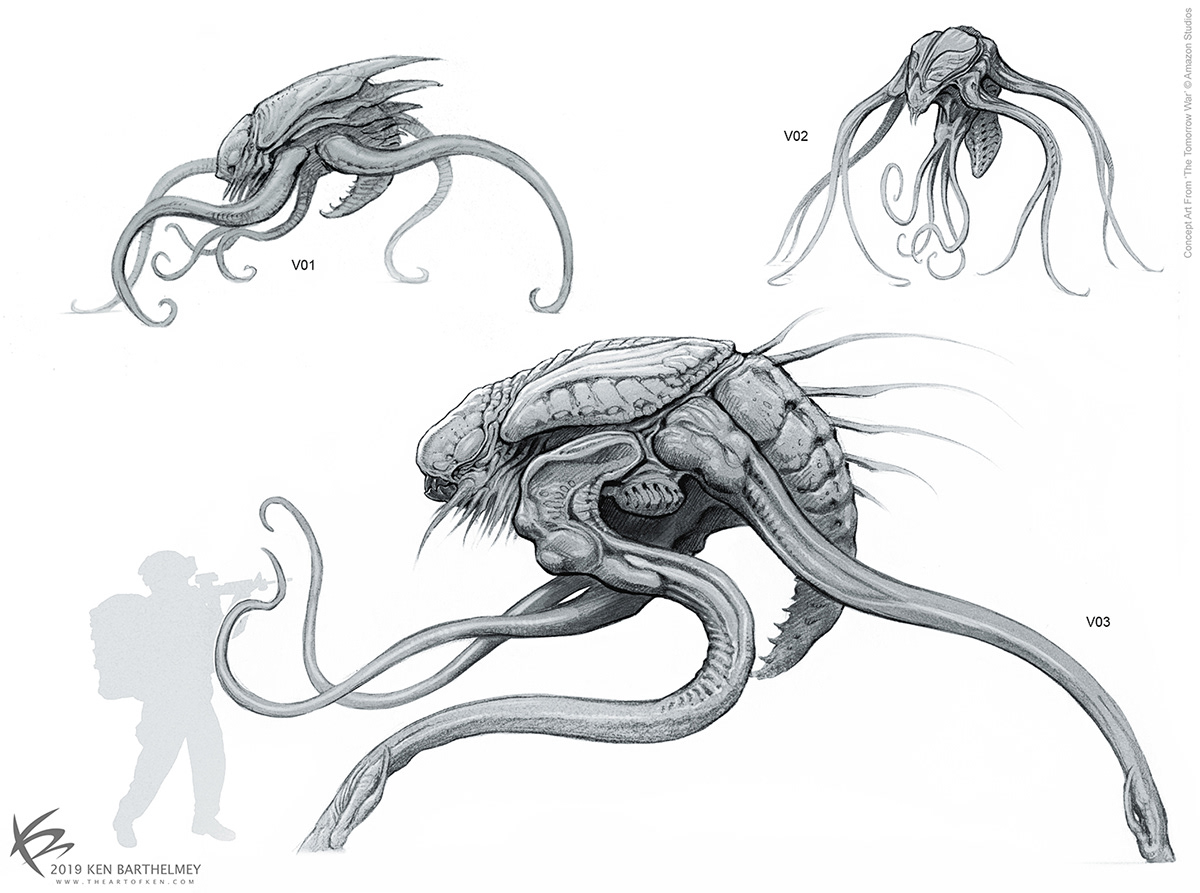
The initial script had a battle scene at the Miami Beach that was mostly in water. Therefore, in the early sketches, I pictured the White Spikes more aquatic with tentacle-like legs.
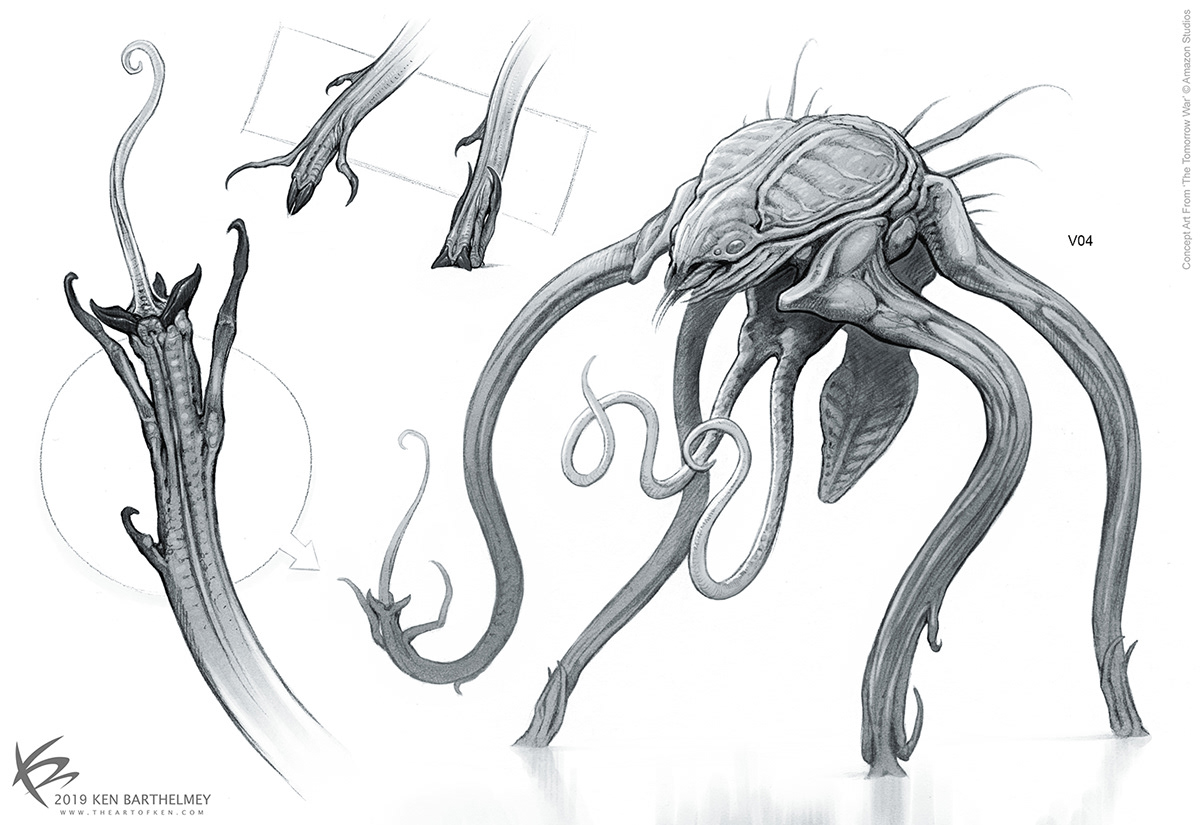
The following is another version with a more frog-like appearance.
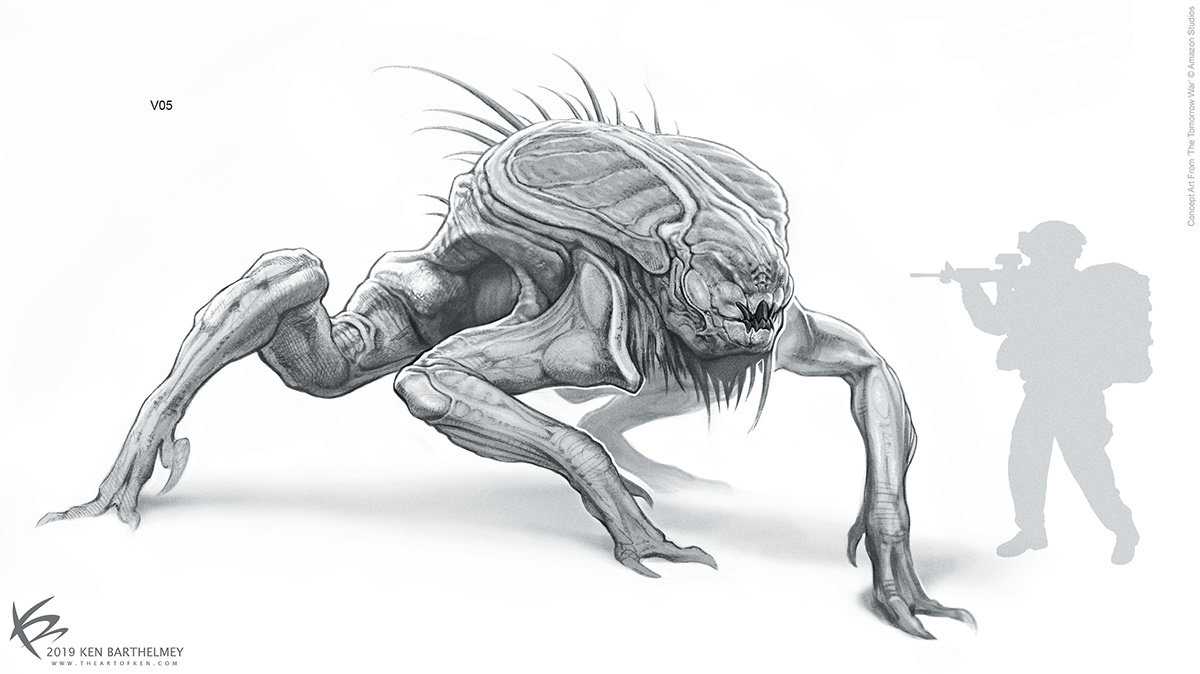
Chris was looking for something truly alien that was still rooted in realism. He particularly liked the boney structure of the arms and legs in sketch V06, and several elements from this sketch made it into the final design.
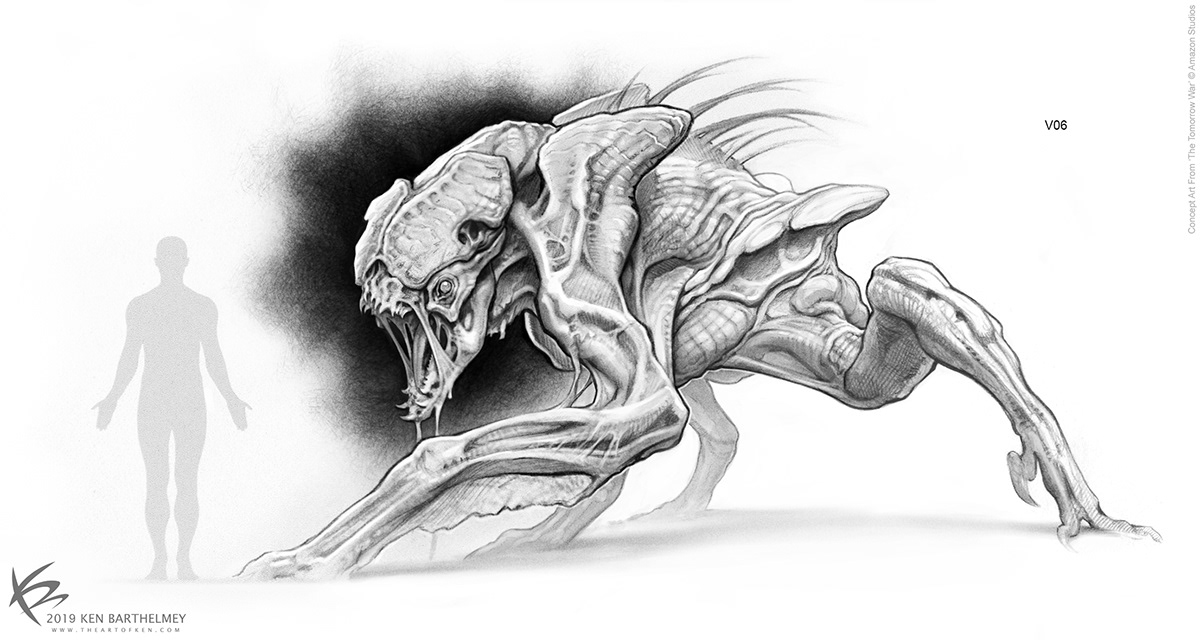
Tentacles
This version is a mashup of my previous sketches V04 and V05. The main influences were the Tripods from 'War of the Worlds' and the Sentinels from 'The Matrix'.
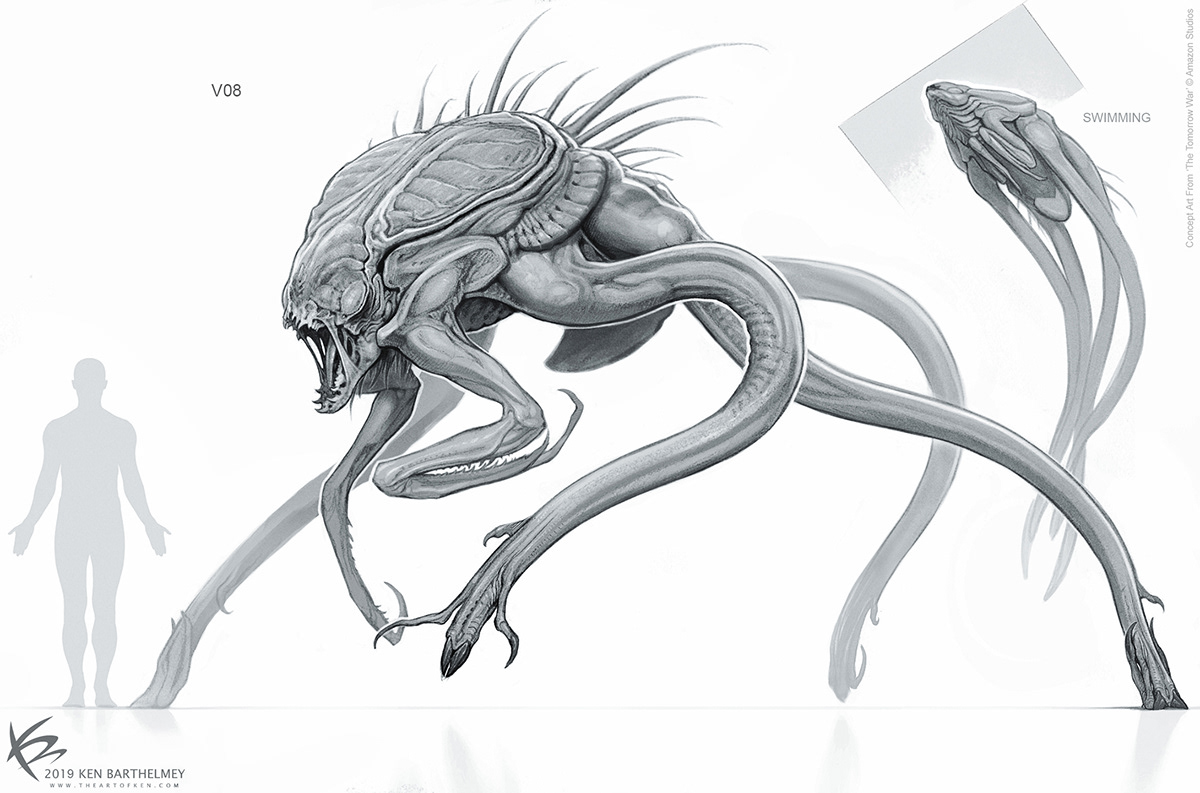
Bio Weapon
To make the White Spikes more intimidating, Chris felt it was important for them to have an offensive weapon, and asked for a plausible way of how the aliens could shoot at their targets.
I came up with the idea of spike-shooting tentacles and presented the idea in a sketch. Chris loved that idea and wanted me to develop that particular design further. I think it became one of the more memorable features of the design.

Armored Shell
Chris suggested adding an armored shell and bigger blades for protection. I used various animal references that influenced the design.
For the head of the White Spikes, for example, I tried to incorporate various references of deep-sea fish. Especially the Viperfish and Piranhas were big influences when I worked on the face.

Legs and Claws
During the design process, I combined elements of V06 and V08. The added joints made the design look more insectoid. Besides that, I left two tentacles which became the two tails on the back.
In total, I made 67 different variations of the design before we arrived at the final version. These variations included various head shapes, eyes, spikes, and legs.

3D Model
Because of a planned meeting at the studio, I only had a few days to sculpt and render the White Spike in 3D. It was a tough deadline considering the complexity of the design, and exporting a model for rendering can be a time-consuming process. Thanks to ZBrush to KeyShot Bridge I managed to finish everything on time.


Anatomy
I like to mix the anatomy of insects with mammals in my designs. For example, the small front arms are based on Mantis claws and the back plates resemble the shell of a grasshopper.
In my opinion, the key to creating a good creature design is finding a balance between realism and imagination. If a design is too outlandish or abstract, it may appear unbelievable or silly, whereas a design that is too realistic may lack excitement.
I like seeing actual anatomy in a design, this makes it look more grounded. Using reference photos from real-life animals is a great help to accomplish that.


Rendering
I used KeyShot at the end of the process for the final rendering. The program enables me to present the design in a very photorealistic way so that the client gets a good idea of what the character might look like in the finished film.


I rendered the model with different materials in KeyShot and then composited those render passes in Photoshop. In the final stage, I overpainted the rendering for a more refined finish. This technique gives me more control over the textures and colors.
The following is an earlier White Spike 3D Concept. This version had bigger insect-like eyes and longer hind legs.
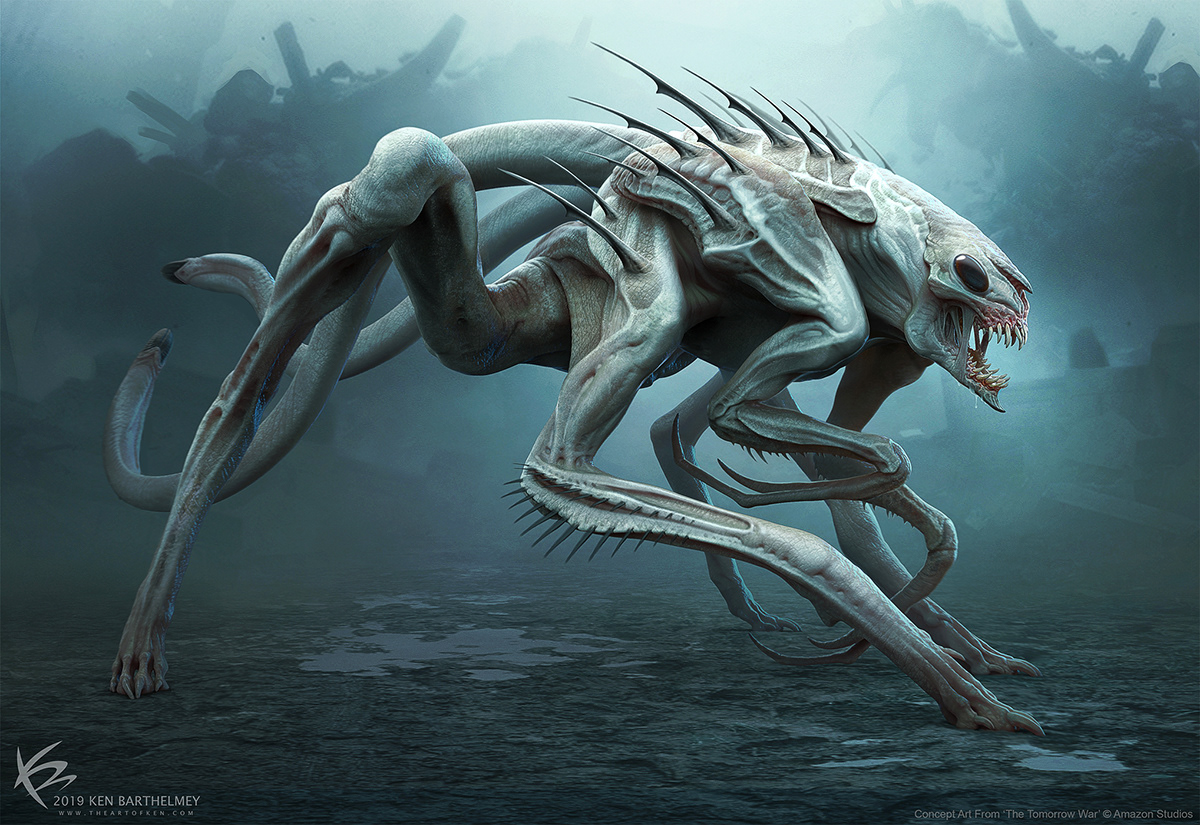
The goal is to come up with something new and original and avoid making it look similar to an already existing design. This is always very challenging and the hardest part of the job.




Thanks
I want to thank Chris MCKay, Rob Cowan, James E. Price, Peter Wenham, Randy Starr, Chris Pratt, Skydance and Amazon Studios.
A special shoutout to the amazing artists and animators who brought my concepts to life: Weta Digital, Luma Pictures, Framestore, Method Studios and Spectral Motion.
